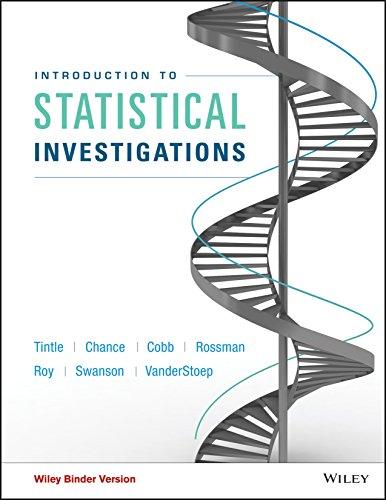Reconsider the previous question on how different generations view marriage. The results are shown in the table
Question:

table in the previous exercise and can also be found in the file MarriageViews.
a. Identify the observational units.
b. Identify the variables recorded. For each variable, identify the role (explanatory or response) and the type (categorical or quantitative).
c. Give two ways in which this study is different from the €œIs yawning contagious?€ study which was introduced in Exploration 5.2.
d. Describe the parameter(s) of interest and assign appropriate symbol(s) to the parameter(s).
e. State in words the appropriate null and alternative hypotheses in the context of the study.
f. State in symbols the appropriate null and alternative hypotheses in the context of the study.
g. Use a simulation-based approach to test the hypotheses stated in parts (e) and (f). Use the Multiple Proportions applet and paste the table located in the file Marriage Views and press Use My Table.
Be sure to report the following:
€¢ The name and the observed value of the statistic (from the study)
€¢ The p-value
€¢ Your conclusion in the context of the study (Be sure to comment on significance, causation, and generalization.)
Data from previous exercise
Do different generations view marriage differently? A 2010 survey of a random sample of adult Americans conducted by the Pew Research Center asked the following question of each participant: €œIs marriage becoming obsolete?€ Th e results from the survey are shown in the table below.

Step by Step Answer:

Introduction To Statistical Investigations
ISBN: 9781118172148
1st Edition
Authors: Beth L.Chance, George W.Cobb, Allan J.Rossman Nathan Tintle, Todd Swanson Soma Roy





